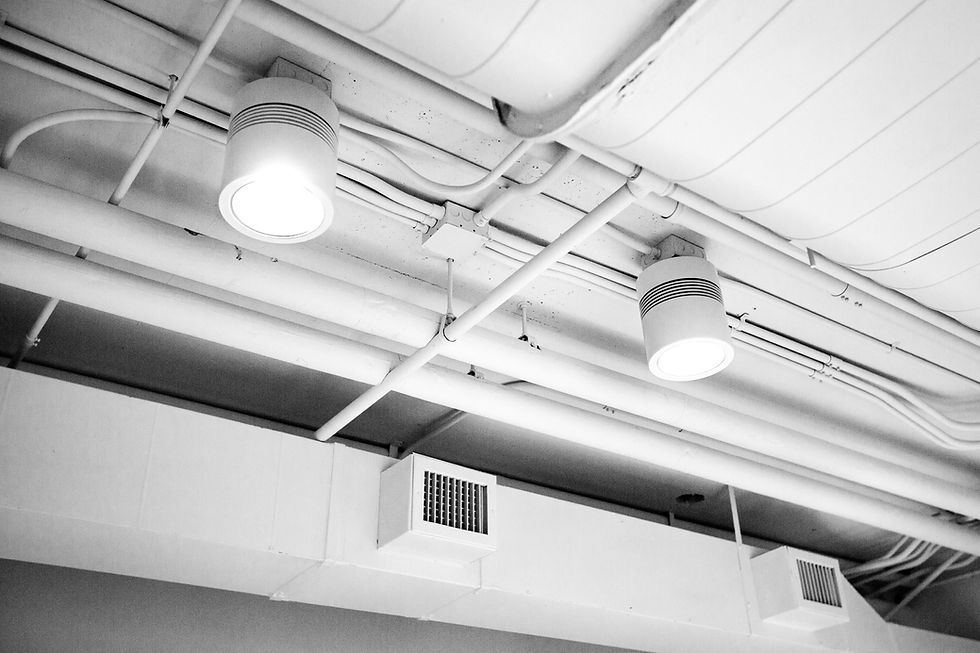
Proper ventilation is crucial for maintaining a healthy and comfortable home. Two of the most popular ventilation systems available today are Heat Recovery Ventilators (HRVs) and Energy Recovery Ventilators (ERVs). But which one is right for you? While both systems improve indoor air quality, they work differently and are suited to different climates and homeowner needs.
Let’s break down the key differences between HRVs and ERVs to help you make the best choice for your home.
What Are HRVs and ERVs?
Both HRVs and ERVs are designed to improve your home’s ventilation by exchanging stale indoor air with fresh outdoor air. At the same time, they help maintain indoor comfort by transferring heat (and, in the case of ERVs, humidity) between incoming and outgoing air streams.
Here’s how they work:
HRV (Heat Recovery Ventilator): Transfers heat between the incoming and outgoing air, helping to retain warmth during winter and coolness during summer.
ERV (Energy Recovery Ventilator): Transfers both heat and moisture, balancing humidity levels in addition to retaining warmth or coolness.
Key Differences Between HRVs and ERVs
Moisture Control
HRV: Focuses on heat transfer only, making it ideal for homes in colder, drier climates where excess moisture isn’t a concern.
ERV: Transfers moisture along with heat, which is beneficial in maintaining balanced humidity levels in climates with high humidity or homes prone to dryness in winter.
Energy EfficiencyBoth systems are energy-efficient, but ERVs are slightly more efficient in humid climates because they reduce the load on dehumidifiers or humidifiers by balancing indoor humidity levels naturally.
Climate Suitability
HRV: Best for colder, dry climates (like much of Canada), where managing humidity is less of a concern, and excess moisture needs to be vented out.
ERV: Ideal for humid climates or homes where maintaining indoor humidity levels is a priority, such as in regions with hot, humid summers or very dry winters.
Air Quality Goals
HRV: Provides fresher air by completely venting out moisture and pollutants, making it ideal for allergy sufferers or those sensitive to indoor air contaminants.
ERV: Offers balanced air while retaining some humidity, which can help prevent overly dry air that can irritate the skin, eyes, and respiratory system.
Benefits of HRVs and ERVs
HRV Benefits:
Excellent for removing excess indoor moisture in winter.
Ideal for colder regions where dryness is less of an issue.
Provides fresh air while minimizing heat loss, lowering heating costs.
ERV Benefits:
Helps maintain balanced indoor humidity, preventing overly dry air in winter or dampness in summer.
More energy-efficient in humid climates.
Reduces the need for additional humidifiers or dehumidifiers.
How to Choose the Right System
Consider Your Climate
If you live in a cold, dry climate, an HRV is likely the best choice.
If your area experiences high humidity or extreme dryness, an ERV may be more suitable.
Assess Your Home’s Needs
Homes with issues like excessive moisture or condensation on windows may benefit from an HRV.
If you’re battling dry skin, static electricity, or respiratory discomfort in winter, an ERV might be a better fit.
Think About Your Comfort Priorities
Do you prioritize fresh, dry air or balanced humidity? Answering this question will guide your decision.
Why Professional Installation Matters
Whether you choose an HRV or an ERV, proper installation is critical for maximizing efficiency and ensuring optimal air quality. A licensed professional will assess your home, recommend the right system, and install it to perform flawlessly with your existing HVAC setup.
Over the Top Heating Is Here to Help
Still unsure whether an HRV or ERV is the best choice for your home? At Over the Top Heating, we specialize in helping homeowners in Parkland County and Edmonton make informed decisions about their home ventilation systems. We’ll evaluate your home’s unique needs and recommend the perfect solution to improve your air quality, energy efficiency, and comfort.
Call or Text: 1(780)910-9719Serving: Parkland County, Edmonton, and surrounding areas
Let’s create a healthier, more comfortable home for you and your family!

Comments